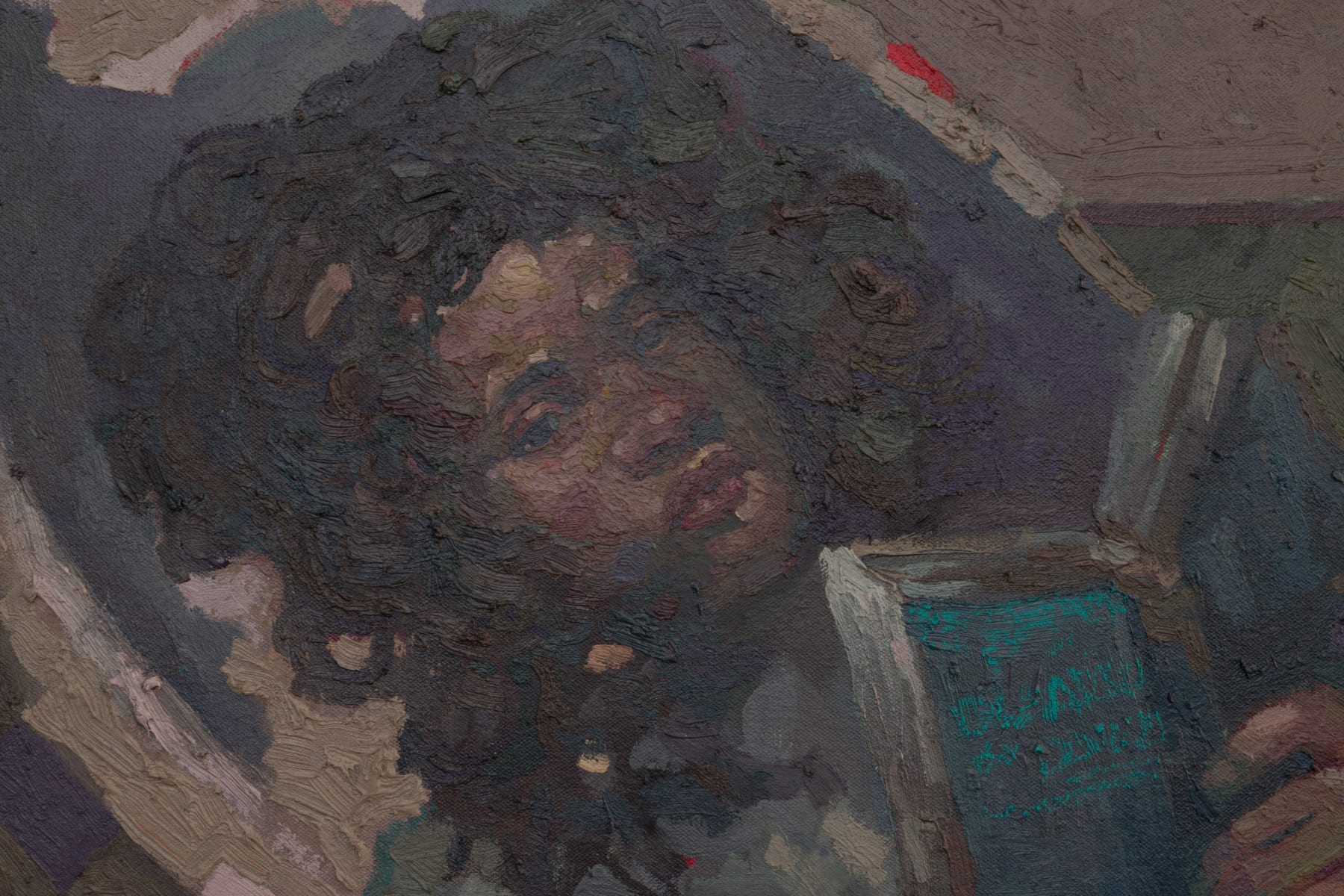Miguel Afa
Ideal, 2024
óleo sobre tela
[oil on canvas]
[oil on canvas]
92 x 132 x 3.5 cm
[36 1/4 x 52 x 1 3/8 in]
5.3 kg
[36 1/4 x 52 x 1 3/8 in]
5.3 kg
Copyright O Artista
Mais imagens
Esta pintura propõe uma releitura de 'Reading girl in a hammock' (1909), de Rob Graafland (1875 - 1940). Nela, uma jovem com seus cabelos dourados exibe o privilégio de sua...
Esta pintura propõe uma releitura de "Reading girl in a hammock" (1909), de Rob Graafland (1875 - 1940). Nela, uma jovem com seus cabelos dourados exibe o privilégio de sua própria existência. Em "Ideal", Miguel Afa apresenta um corpo racializado que descansa na rede, sem distinção de gênero, imersa na leitura do livro Quarto de Despejo, de Carolina Maria de Jesus. A escolha não é acidental - Carolina Maria de Jesus, uma escritora negra de origem pobre, desafiou as expectativas e preconceitos ao escrever sobre a vida nas favelas, revelando a profunda complexidade e humanidade das pessoas.
A composição revela uma subversão de narrativas históricas: corpos que antes foram forçados ao trabalho extenuante, principalmente em contextos coloniais e pós-coloniais, agora ocupam o lugar da intelectualidade e do deleite, em um quintal que constitui intimidade e privacidade. A figura elaborada pelo artista transcende o peso histórico de opressão.
[This painting proposes a reinterpretation of “Reading girl in a hammock” (1909), by Rob Graafland (1875 - 1940) - a young woman with golden hair displays the privilege of her own existence. In “Ideal”, Miguel Afa presents a racialized body resting in a hammock, without distinction of gender, immersed in reading the book Quarto de Despejo, by Carolina Maria de Jesus. The choice is not accidental - Carolina Maria de Jesus, a black writer with a poor background, defied expectations and prejudices by writing about life in the favelas, revealing the profound complexity and humanity of the people.
The composition reveals a subversion of historical narratives: bodies that were once forced into strenuous labor, especially in colonial and post-colonial contexts, now occupy the place of intellectuality and delight, in a backyard that constitutes intimacy and privacy. The figure elaborated by the artist transcends the historical weight of oppression.]
A composição revela uma subversão de narrativas históricas: corpos que antes foram forçados ao trabalho extenuante, principalmente em contextos coloniais e pós-coloniais, agora ocupam o lugar da intelectualidade e do deleite, em um quintal que constitui intimidade e privacidade. A figura elaborada pelo artista transcende o peso histórico de opressão.
[This painting proposes a reinterpretation of “Reading girl in a hammock” (1909), by Rob Graafland (1875 - 1940) - a young woman with golden hair displays the privilege of her own existence. In “Ideal”, Miguel Afa presents a racialized body resting in a hammock, without distinction of gender, immersed in reading the book Quarto de Despejo, by Carolina Maria de Jesus. The choice is not accidental - Carolina Maria de Jesus, a black writer with a poor background, defied expectations and prejudices by writing about life in the favelas, revealing the profound complexity and humanity of the people.
The composition reveals a subversion of historical narratives: bodies that were once forced into strenuous labor, especially in colonial and post-colonial contexts, now occupy the place of intellectuality and delight, in a backyard that constitutes intimacy and privacy. The figure elaborated by the artist transcends the historical weight of oppression.]













